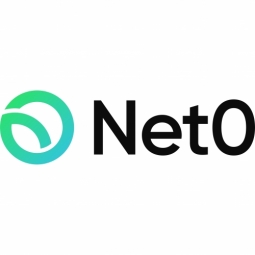Technology Category
- Platform as a Service (PaaS) - Application Development Platforms
Applicable Industries
- Education
Use Cases
- Continuous Emission Monitoring Systems
About The Customer
Educate Online is an educational platform founded in the United States in 2018. The platform is committed to providing high-quality online and in-person education to children worldwide. As the platform grew, it noticed a growing interest among its users - students and parents - in sustainable practices and services. This interest was driven by a desire to improve the quality of life for future generations. To align with these values, Educate Online sought to become a carbon-neutral platform, demonstrating its commitment to environmental sustainability and its responsiveness to its users' values and interests.
The Challenge
Educate Online, a US-based learning platform established in 2018, faced a unique challenge as it expanded. The platform, which offers high-quality online and in-person education to children globally, found that its users - students and parents - were increasingly interested in sustainable practices and services. They wanted to contribute to improving the quality of life for future generations. To align with these values, Educate Online sought to become a carbon-neutral platform. However, they needed a method to calculate their users' carbon footprint accurately to offset it accordingly. The challenge was not only to measure and offset the carbon emissions but also to identify the primary sources of emissions within the company's operations.
The Solution
To address this challenge, Educate Online collaborated with Net0, a company specializing in emission accounting. Net0's AI-powered automated platform enabled Educate Online to measure and analyze its emissions across all scopes. This partnership allowed Educate Online to offset carbon emissions equivalent to the amount released, providing valuable insights into the company's primary emission sources. Furthermore, Net0's platform offered real-time tracking and analysis of carbon emissions. With the help of Net0's simulation tools, Educate Online could take proactive steps to reduce its emissions by focusing on the primary sources. The company also shared its Net0 dashboard with its users, keeping the community involved and educated on where further steps should be taken to reduce emissions continuously. Additionally, Educate Online could offset unavoidable emissions through Net0's multiple certified offsetting projects, ensuring their services remained carbon neutral.
Operational Impact
Quantitative Benefit

Case Study missing?
Start adding your own!
Register with your work email and create a new case study profile for your business.
Related Case Studies.

Case Study
Revolutionizing Medical Training in India: GSL Smart Lab and the LAP Mentor
The GSL SMART Lab, a collective effort of the GSL College of Medicine and the GSL College of Nursing and Health Science, was facing a challenge in providing superior training to healthcare professionals. As clinical medicine was becoming more focused on patient safety and quality of care, the need for medical simulation to bridge the educational gap between the classroom and the clinical environment was becoming increasingly apparent. Dr. Sandeep Ganni, the director of the GSL SMART Lab, envisioned a world-class surgical and medical training center where physicians and healthcare professionals could learn skills through simulation training. He was looking for different simulators for different specialties to provide both basic and advanced simulation training. For laparoscopic surgery, he was interested in a high fidelity simulator that could provide basic surgical and suturing skills training for international accreditation as well as specific hands-on training in complex laparoscopic procedures for practicing physicians in India.

Case Study
IoT platform Enables Safety Solutions for U.S. School Districts
Designed to alert drivers when schoolchildren are present, especially in low-visibility conditions, school-zone flasher signals are typically updated manually at each school. The switching is based on the school calendar and manually changed when an unexpected early dismissal occurs, as in the case of a weather-event altering the normal schedule. The process to reprogram the flashers requires a significant effort by school district personnel to implement due to the large number of warning flashers installed across an entire school district.

Case Study
Implementing Robotic Surgery Training Simulator for Enhanced Surgical Proficiency
Fundacio Puigvert, a leading European medical center specializing in Urology, Nephrology, and Andrology, faced a significant challenge in training its surgical residents. The institution recognized the need for a more standardized and comprehensive training curriculum, particularly in the area of robotic surgery. The challenge was underscored by two independent studies showing that less than 5% of residents in Italian and German residency programs could perform major or complex procedures by the end of their residency. The institution sought to establish a virtual reality simulation lab that would include endourological, laparoscopic, and robotic platforms. However, they needed a simulator that could replicate both the hardware and software of the robotic Da Vinci console used in the operating room, without being connected to the actual physical console. They also required a system that could provide both basic and advanced simulation training, and a metrics system to assess the proficiency of the trainees before they performed surgical procedures in the operating theater.

Case Study
Edinburgh Napier University streamlines long-distance learning with Cisco WebEX
• Geographically dispersed campus made in-person meetings costly and inconvenient.• Distance-learning programs in Malaysia, India, and China required dependable, user-friendly online tools to maximize interaction in collaborative workspaces.• Virtual learning environment required a separate sign-in process, resulting in a significant administrative burden for IT staff and limited adoption of collaboration technology.

Case Study
8x increased productivity with VKS
Before VKS, a teacher would spend a lot of time showing a group of 22 students how to build a set of stairs within a semester of 120 hours. Along with not leaving the teacher much time to provide one-on-one support for each student to properly learn carpentry, it also left a considerable amount of room for error. Key information would be misinterpreted or lost as the class was taught in the typical show-and-tell way.

Case Study
Scalable IoT Empowering GreenFlex's Sustainable Growth
GreenFlex, a company that supports sustainable development, decarbonization, and energy efficiency, faced several challenges in its quest to expand its business. The company needed to deploy a robust and sustainable IoT technology to support its growth. It was crucial for them to monitor and control devices at customer sites in a safe and reliable manner. They also needed to integrate devices across a range of communication protocols and gather and act on data to meet efficiency targets. GreenFlex had previously built IoT capabilities into its digital platform, GreenFlexIQ, to monitor and manage customer sites remotely. However, they soon realized that they needed a new platform to support their ambitions. They needed a platform that could scale to connect more devices for production management and make it easier for the operations team to manage devices in the field.







